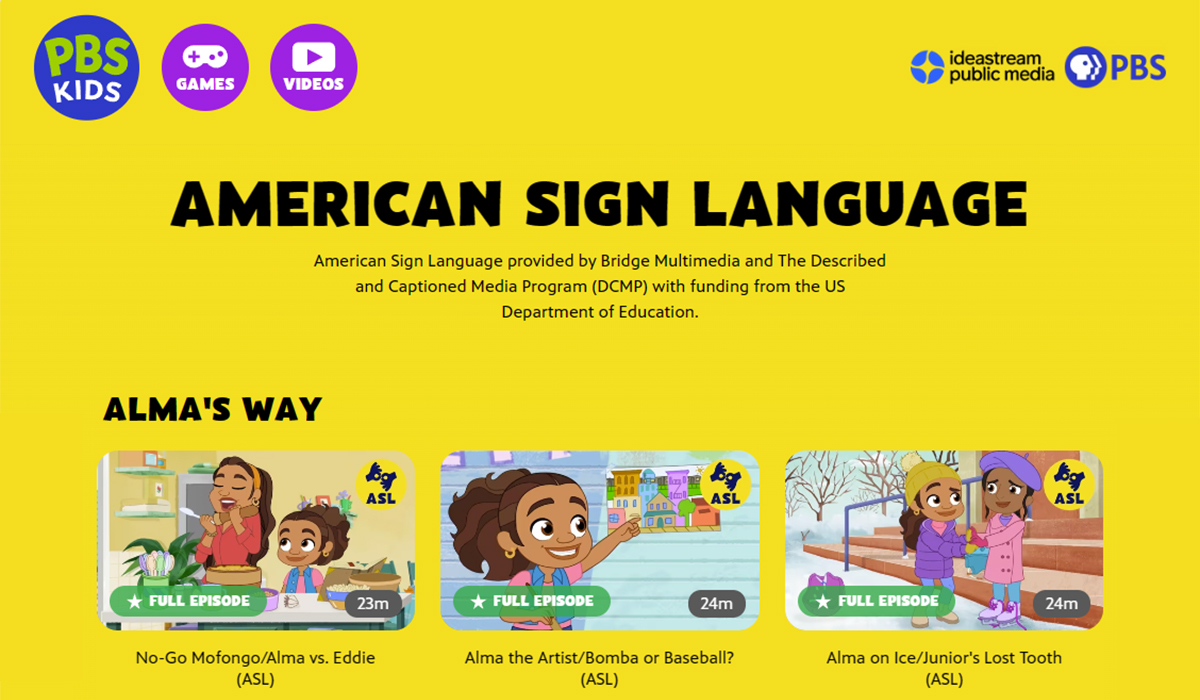Introduction
PBS Kids, a leader in delivering educational content tailored for young viewers, is breaking new ground by integrating American Sign Language (ASL) into some of its beloved children’s programming. This initiative marks a significant advancement in making educational media accessible to the deaf and hard-of-hearing community. As of April 18, 2024, PBS Kids now features ASL interpretation across several series on its free digital streaming platforms, pioneering a more inclusive approach to early childhood education.
Overview Of The Initiative
In a groundbreaking move, PBS Kids will implement ASL interpretations into episodes from six popular series: “Arthur,” “Alma’s Way,” “Daniel Tiger’s Neighborhood,” “Donkey Hodie,” “Work It Out Wombats!,” and “Pinkalicious & Peterrific.” Each series will initially offer 10 episodes with this new feature, aiming to create a more inclusive viewing experience for children who are deaf or hard of hearing.
Background and Rationale
Approximately 2 to 3 out of every 1,000 children in the United States are born with a detectable level of hearing loss in one or both ears. Early childhood is a critical time for educational engagement, and accessibility in learning resources can significantly impact development. Recognizing this, PBS Kids has been a forerunner in incorporating features like closed captioning and sensory-friendly options to support diverse learning needs. This new step with ASL integration deepens its commitment to accessibility.
Collaborative Efforts
The initiative is the result of collaboration between PBS Kids, GBH Kids and Fred Rogers Productions, alongside technical and accessibility specialists from Bridge Multimedia and the Described and Captioned Media Program (DCMP). These partnerships have been instrumental in ensuring the project not only meets technical standards but also aligns closely with the needs and preferences of the deaf and hard-of-hearing communities.
Research and Development
PBS Kids initiated research into ASL integration in 2021, engaging directly with the deaf community to tailor the viewing experience. This research included extensive user testing to determine optimal on-screen placements for ASL interpreters, focusing on visibility and interaction with the content. Feedback indicated a strong preference for ASL interpreters to be fully integrated into the viewing space, rather than being relegated to a corner.
Innovative ASL Integration Strategies
Reflecting on community feedback, PBS Kids has innovatively embedded ASL interpreters within the show’s environments, making them a dynamic part of the storytelling. The interpreters are carefully chosen to reflect the racial and ethnic diversity of the audience, enhancing the connection between viewers and the content. This thoughtful placement allows deaf children to engage with characters and educational content seamlessly.
Future Plans and Expectations
With the initial release of 60 episodes featuring ASL, PBS Kids is set to collect insights on how these modifications enhance the viewing experience for deaf and hard-of-hearing audiences. The success of this rollout will guide future expansions, potentially increasing the number of accessible episodes and series. Sara DeWitt, Senior Vice President of PBS Kids, expressed optimism about learning from this initiative to further improve and expand the network’s accessibility features.
Conclusion
The integration of ASL into PBS Kids programming is a significant step forward in making educational content universally accessible. This initiative not only supports the cognitive and social development of deaf and hard-of-hearing children but also sets a standard for inclusivity in children’s media. By embracing diversity and implementing direct feedback from the community, PBS Kids is paving the way for a more inclusive future in educational broadcasting.
Additional Resources
To access these new ASL-integrated episodes, visit the PBS Kids (American Sign Language) ASL Videos page. Educators and parents can also find additional resources and tips on raising children, planning birthday parties and other kids activities on the PBS Kids for Grown Ups website.
















